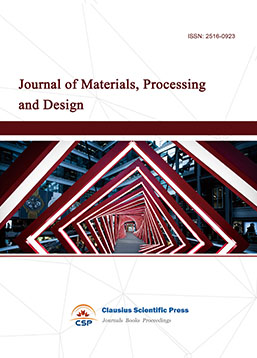Development Technology of Honeysuckle Wolfberry and Chrysanthemum Tea
DOI: 10.23977/analc.2022.010106 | Downloads: 14 | Views: 2172
Author(s)
Li Shuping 1, Jiang Jiahui 1, Yu Zhengyang 1, Liu Fulin 2, Xu Pinghui 3
Affiliation(s)
1 Department of Biology and Food Engineering, Bozhou University, Bozhou, Anhui, China
2 School of Biology and Food of Shangqiu Normal University, Shangqiu, Henan, China
3 Xinxiang Bokai Biotechnology Co., Ltd., Xinxiang, Henan, China
Corresponding Author
Li ShupingABSTRACT
This study mainly takes honeysuckle, chrysanthemum, wolfberry as the main raw materials, supplemented by cassia, jujube and rock sugar for bagging, develop honeysuckle wolfberry chrysanthemum tea, combined with the sensory evaluation standards, according to the optimal range of one-factor experiment, combined with the response surface software analysis of the best formula. Develop a honeysuckle with heat protection and sweet taste wolfberry chrysanthemum tea. The best formula obtained according to the response surface method software is honeysuckle 1.049 g, chrysanthemum 0.405g, wolfberry 0.578g, cassia seed 0.447g, jujube 0.710g, rock sugar 0.978g. At this time, the honeysuckle wolfberry chrysanthemum tea developed bright and transparent color, tea mellow fragrance, is a kind of flower tea drink with heat and detoxification and liver protection.
KEYWORDS
Honeysuckle, Chrysanthemum, Chinese wolfberry, single factor experiment, response surface methodCITE THIS PAPER
Li Shuping, Jiang Jiahui, Yu Zhengyang, Liu Fulin, Xu Pinghui, Development Technology of Honeysuckle Wolfberry and Chrysanthemum Tea. Analytical Chemistry: A Journal (2022) Vol. 1: 38-53. DOI: http://dx.doi.org/10.23977/analc.2022.010106.
REFERENCES
[1] Cui Lingzhi, Guan Yanpeng, Zhang Xiaorong, et al.[J] Light Industry Technology, 2021,37 (12): 22-26.
[2] Golubev Denis, Zemskaya Nadezhda, Shevchenko Oksana, etal. Honeysuckle extract (Lonicera pallasii L.) exerts antioxidant properties and extends the lifespan and healthspan of Drosophila melanogaster[J]. Biogerontology, 2022(prepublish).
[3] Tian Xin, Feng Shuai, Shi Lei, et al. Progress in the chemical composition, pharmacological effects and quality control of Echinacea [J]. Shandong Journal of Traditional Chinese Medicine, 2021,40 (12): 1384-1391.
[4] Xufang wang. Ningxia wolfberry for both medicine and food [J]. China Rural Science and Technology, 2016 (03): 36-38.
[5] Dong Yujie, Jiang Yuanqi, Liu Yi, et al. Analysis of the chemical composition, pharmacological effects and quality markers of cassia seed [J]. Herbal medicine, 2021,52 (09): 2719-2732.
[6] Jin Miao. The development and utilization of cassia seed [J]. Food Safety and Quality Testing Journal, 2019,10 (03): 633-637.
[7] Wu Wenqiang, Chen Xuemei, Wang Zhengwu. Development conditions and countermeasures of fresh food red jujube planting industry in Guangxi [J]. Modern agricultural science and technology, 2021 (21): 225-227 + 230.
[8] Zhang Hao, Zhao Ying, Zheng Xinyao, et al. Study on xylitol compound health drink [J]. Agricultural products processing, 2018 (13): 11-13.
[9] Sun Juntao, Xiao Fugang, Wang Siqi. Development of cassia seed Chinese wolfberry Honeysuckle Compound Beverage [J]. Food Research and Development, 2017,38 (09): 108-111.
[10] Xu Jing'an. The third lecture is a discussion on one-factor investigation and experimental research [J]. Shanghai Chemical Industry, 2016,41 (07): 10-14.
[11] Han Jianping, Luo Yongpeng. Static dynamic correction theory of structural finite element model based on response surface method [J]. Earthquake engineering and engineering department vibration 2013,33 (05): 128-137.
[12] Liu Zhenghui, Cui Xian, Wei Man, et al. Study on optimization of Honeysuckle Tea essence by response surface method [J]. Fresh and processing, 2021,21 (07): 59-63 + 70.
[13] Wang Dongxu. Progress in the health function of scented tea [J]. China Tea Processing, 2022 (01): 58-61.
| Downloads: | 1377 |
|---|---|
| Visits: | 77176 |
Sponsors, Associates, and Links
-
Forging and Forming

-
Composites and Nano Engineering

-
Journal of Materials, Processing and Design

-
Metallic foams

-
Smart Structures, Materials and Systems

-
Chemistry and Physics of Polymers

-
Modern Physical Chemistry Research

-
Inorganic Chemistry: A Journal

-
Organic Chemistry: A Journal

-
Progress in Materials Chemistry and Physics

-
Transactions on Industrial Catalysis

-
Fuels and Combustion

-
Casting, Welding and Solidification

-
Journal of Membrane Technology

-
Journal of Heat Treatment and Surface Engineering

-
Trends in Biochemical Engineering

-
Ceramic and Glass Technology

-
Transactions on Metals and Alloys

-
High Performance Structures and Materials

-
Rheology Letters

-
Plasticity Frontiers

-
Corrosion and Wear of Materials

-
Fluids, Heat and Mass Transfer

-
International Journal of Geochemistry

-
Diamond and Carbon Materials

-
Advances in Magnetism and Magnetic Materials

-
Advances in Fuel Cell

-
Journal of Biomaterials and Biomechanics


 Download as PDF
Download as PDF